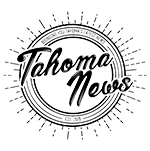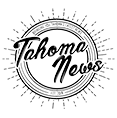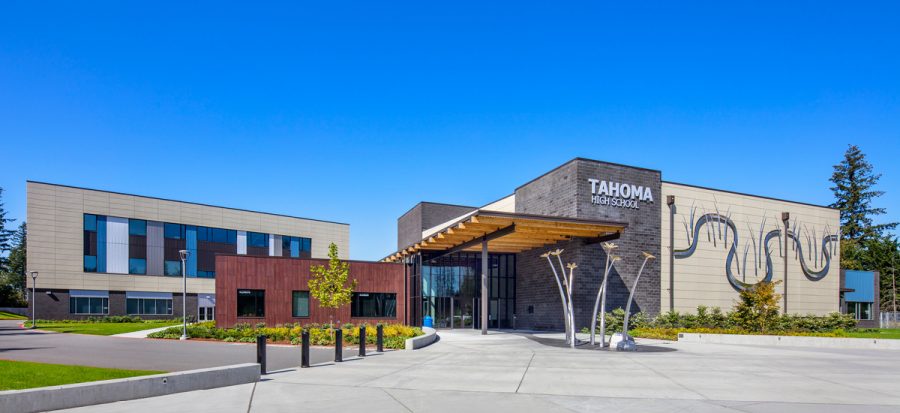Overpopulation. How did we get here? How is it affecting us? What do we do?
October 11, 2021
The new Tahoma High School boasts the title of the biggest school in Washington state, both square feet wise and population-wise, despite this many wonders if the school is large enough for the high school population. The school was built in 2017 and the district has already been forced to install portables to deal with the large population. This begs the question, how is the new school already too small for the growing population?
There are several answers to this question, there is a state-wide law in Washington that prohibits districts from building a school any larger than the capacity needed for one year in the future. This prevented Tahoma from looking 4 or 5 years into the future of the community.
According to Superintendent Hanson, another reason for our high population is that as the school was being built Maple Valley changed its zoning plans. Parts of Maple Valley that had been zoned for industrial or commercial use had suddenly become residential zones which brought in more families and by extension more students.
Mr. Simmons, a math teacher at Tahoma, said that he notices both pros and cons to bigger class sizes as well as a larger school in general. Simmons commented that “We’re able to offer a lot of opportunities to these kids when it comes to clubs”. Simmons also mentioned that there are many extra resources we are able to have because of the large number of students. One of the cons that he noted was that “kids can maybe feel overwhelmed or feel lost with how many students there are”. In addition to teaching at Tahoma Mr. Simmons also coaches JV basketball, he said, “Half of the kids trying out don’t make the team, and sometimes we are cutting kids that would be good enough to make the team at another school, or a smaller school”. Simmons also mentioned some cons from his point of view as a teacher, emphasizing the fact that grading tests, quizzes, and assignments can become very time-consuming with such a large population.
Mrs. Haag and Mrs. Russell, who teach Physical Education and Health, as well as other PE electives, both mentioned that as PE teachers their class sizes are larger than the average teacher and in the past could range up to 40 students. Mrs. Russell noted that some of the positives to having a larger school is that it allowed for more teachers in the PE department which means that class sizes for PE teachers have actually decreased in some instances. Mrs. Haag also commented on some of the pros of having large classes: “Having larger numbers is actually more fun because we can do more things, we have more teams, we get to do more activities altogether”
In opposition, both teachers agreed that there are flaws to having large classes, “It takes a little bit longer to learn about your students and to get to know them on a deeper level”. Mrs. Russell’s response was very similar, “It’s hard to feel like I really get to know every student as an individual and make those relationships when I have so many kids”.
When discussing whether or not the school was overpopulated, Simmons acknowledged the fact that the school was definitely overcapacity. He commented that we have “seen tremendous growth”. He also said that we are definitely feeling the effects of overpopulation at our high school. Simmons said that “It feels like our infrastructure isn’t able to adequately handle the number of students that we have”. He also stated that if we were to build a second high school, it would provide much better opportunities when it comes to cut sports.
Some ways that Mrs. Haag described Tahoma’s culture through our high population is how in the past years we have grown so much, and how years ago she used to know everyone who walked across the stage at graduation and how now there are so many students that she never gets to meet. Haag added that since we have such a large school it might feel less connected to one another, and how that is much easier in a smaller school.
Mrs. Haag acknowledged that although leadership tries to bring everyone together, it gets harder the larger our school gets. Haag concluded by talking about her experiences at Tahoma, she’s been a teacher here for 26 years and watched the community/school grow over all the years she has been teaching at Tahoma, she has grown with the school and when there is growth there is always “growing pains”, and how we are experiencing some of that here and there.
It is safe to say that teachers understand that we have a very high population of students and are growing larger and larger and with that comes some good and some bad.
One rising question that needs to be answered soon is how we might deal with this rise of students in the future. Although having a whole other high school built sounds nice it is very unlikely that it will happen as Tahoma taxpayers are not going to be all too keen on paying for two new schools within the span of 5 years.
Another possible option is to convert one of the other schools into the district into a high school, there are two main issues with this solution, the first being that if a school is converted no matter how nice it is it will not have the amenities that the current high school does. This spawns an equity issue surrounding who gets to go to the nice high school and who gets to go to the converted one.
The last possible solution, that we can think of, is a grade shift within the school, this shift would make it so the high school only contained 10th, 11th, and 12th graders, students in the 9th grade would attend school at STMS or MVMS. This would alleviate some of the problems at the high school, but there is the possibility that the issues that the high school is facing would simply transfer over to the middle schools.
The Tahoma school district is made up of a very large community that is growing bigger every year, this begs the question, how long can the high school keep up?




Kira Corona • Oct 11, 2021 at 2:05 pm
Very good point, I especially loved the ending sentence. Great job guys